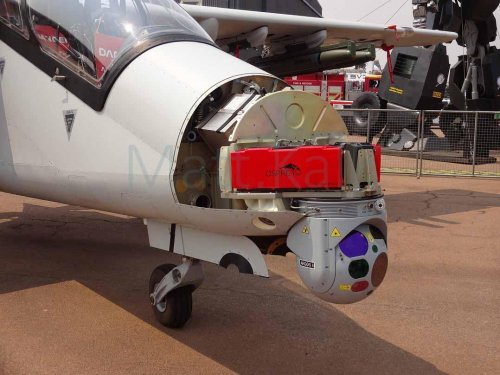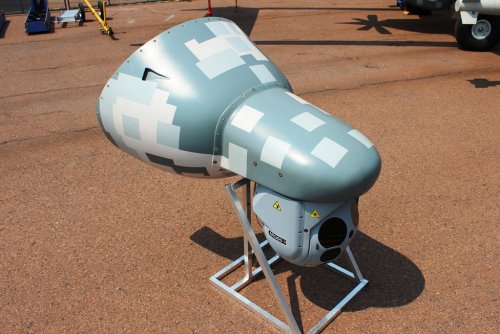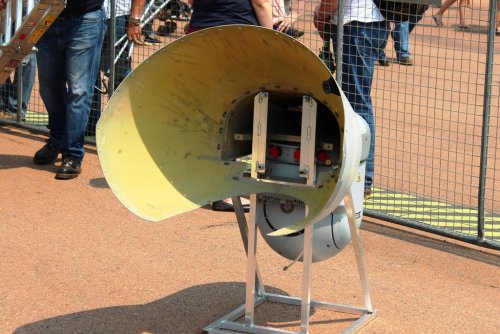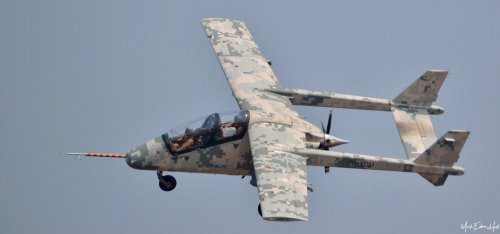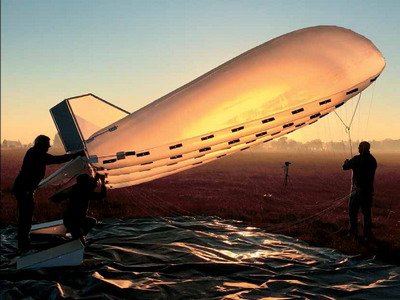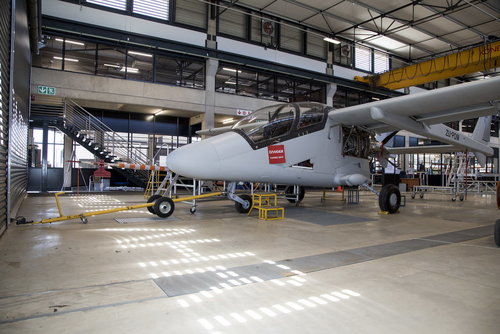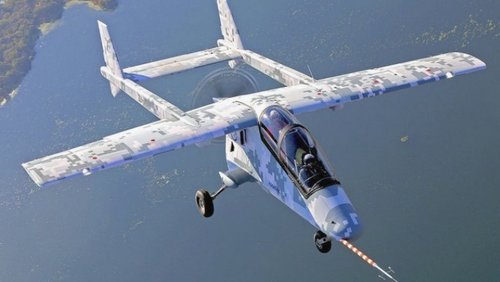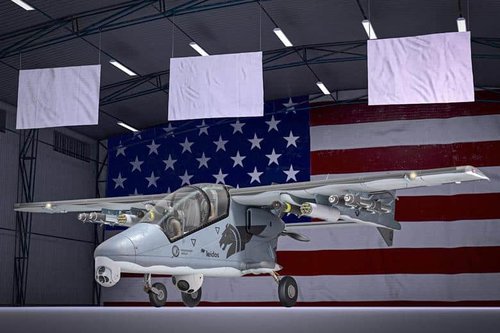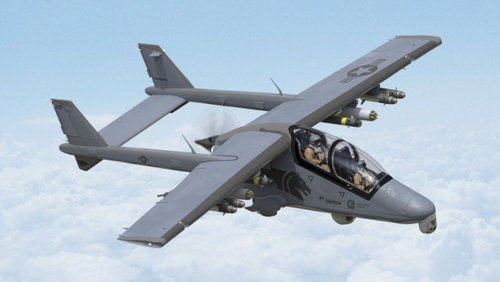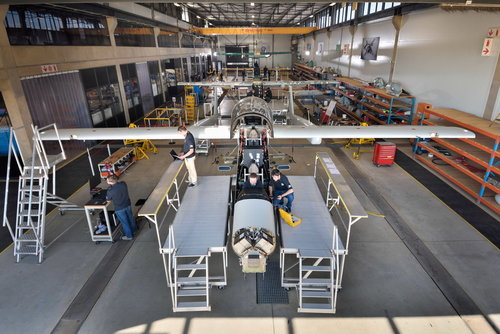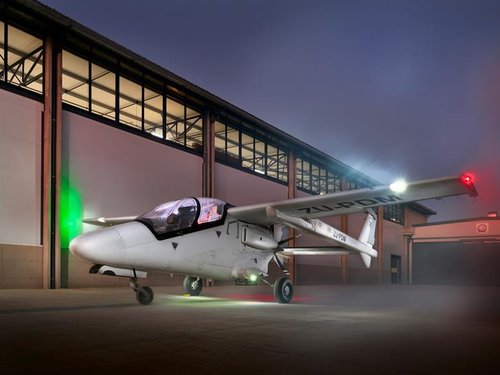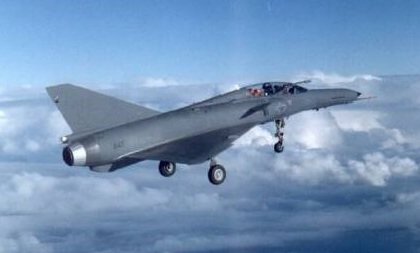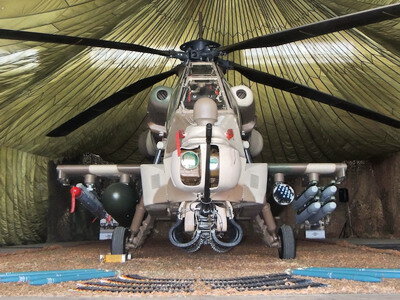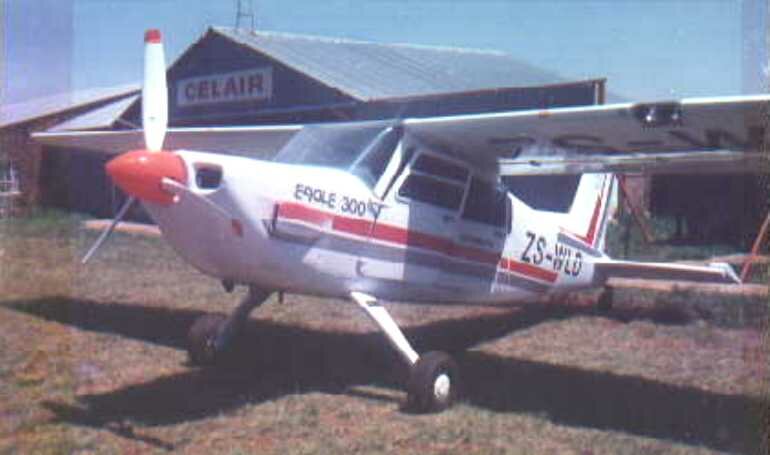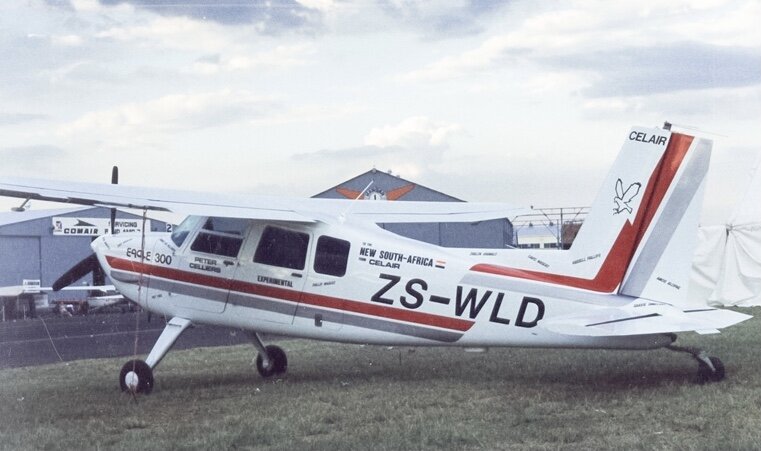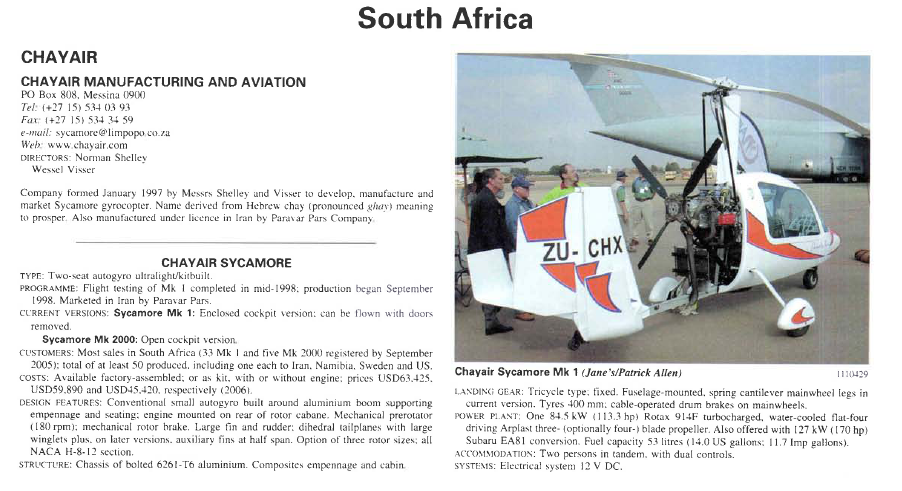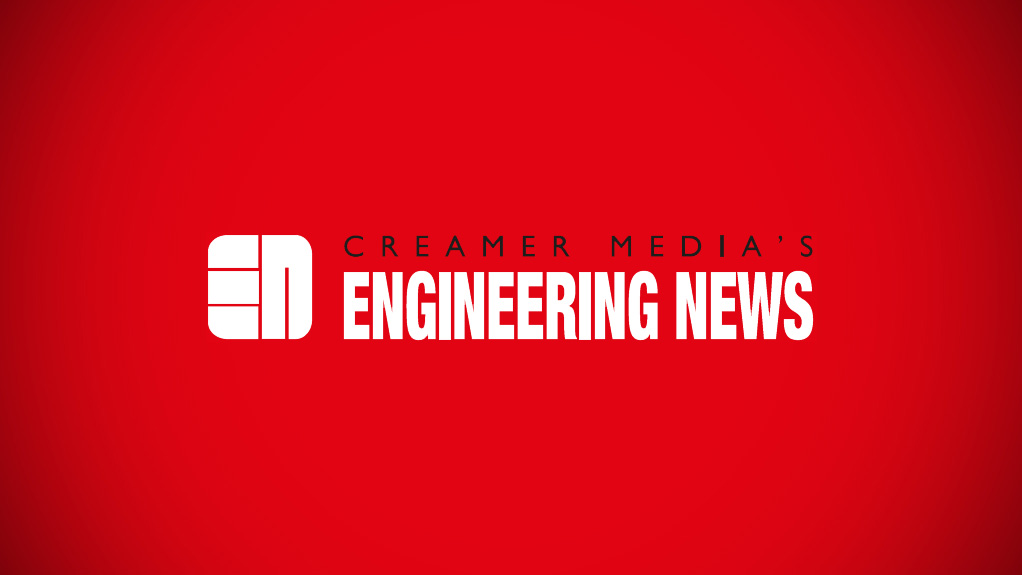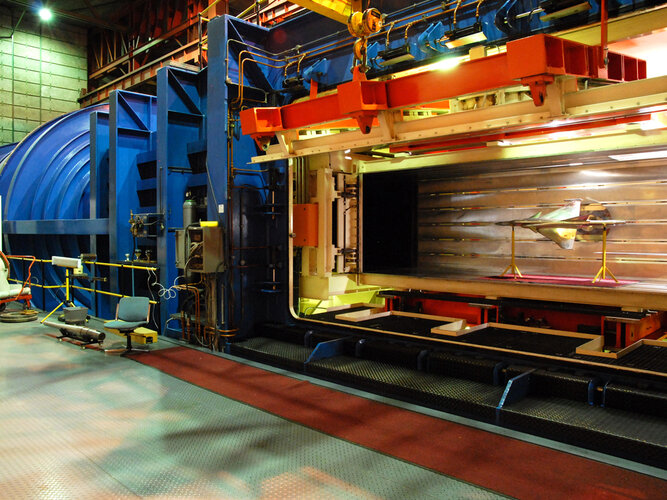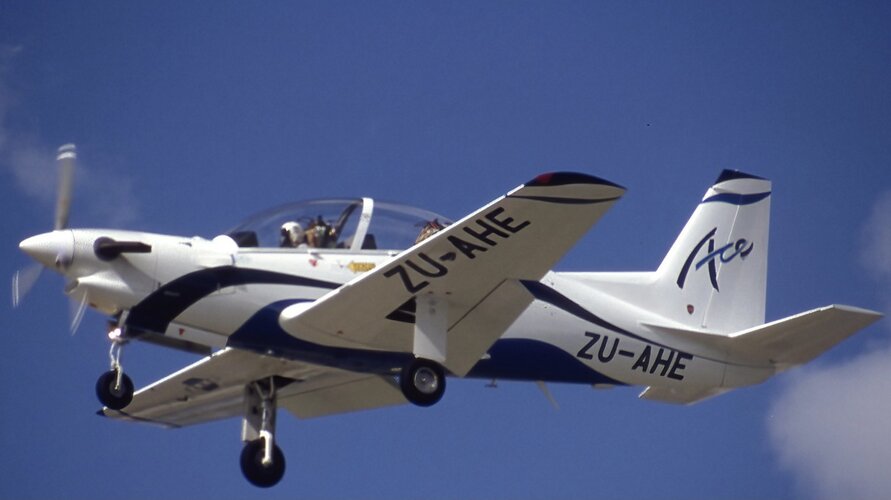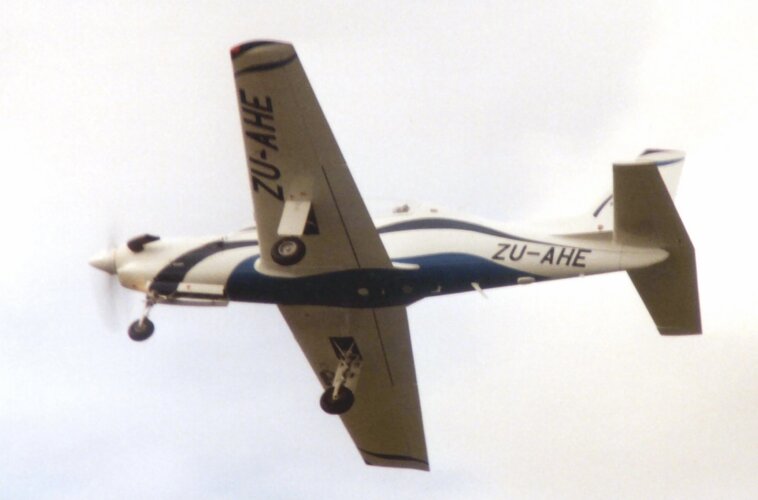From the web, and following on from Beaky and Riggerrob:
"The Celair Eagle was part of a CSIR sponsored programme to find a battlefield support aircraft for the SADF. The CSIR built one, Peter the Eagle & Prof Reed (Rooivalk aerobatic aircraft & SAAAF's first target drones & UAVs) from Durban University built the other."
CELAIR EAGLE 300 (South Africa)
Section
AIRCRAFT - FIXED-WING - CIVIL
TYPE : Single-engined STOL light utility aircraft.
PROGRAMME : Started August 1987; first flight (ZS-WLD) 4 April 1990; FAR Pt 23 and South African DCA certification intended; production start expected 1992.
DESIGN FEATURES : Unbraced wing; section NACA 64-313 at root, Wortmann FX-60-126 at tip; dihedral 3º; incidence 1º 30'.
CONTROLS : FLYING CONTROLS: Mechanical; electrically actuated starboard side elevator trim tab; control surfaces aerodynamically and mass balanced. Fowler flaps.
AC:STRUCTURE : Low pressure/elevated temperature (LPET) glassfibre cloth and Nomex honeycomb core throughout except for steel tube central fuselage; single-spar wing.
LANDING GEAR : Non-retractable type, with self-sprung (composite) mainwheel legs and steel tube sprung, fully castoring tailwheel. Cleveland hydraulic mainwheel brakes. Float and ski gear to be developed.
POWER SYSTEMS :
POWER PLANT: One 224 kW (300 hp) Textron Lycoming IO-540-K flat-six engine, driving an MT-9V three-blade constant-speed propeller. Fuel in single tank in each wing, combined capacity 330 litres (87.2 US gallons; 72.6 Imp gallons); gravity fuelling point in top of each tank. Oil capacity 13.6 litres (3.6 US gallons; 3 Imp gallons).
ACCOMMODATION : Pilot and up to five passengers. Three forward hinged single doors (front, port and starboard, and rear starboard), plus upward hinged large cargo door on port side at rear. Passenger seats can be removed for carriage of cargo.
SYSTEMS : Hydraulic system for brakes only; 12V DC electrical system with battery and alternator.
AVIONICS : Narco IFR instrumentation standard.
DIMENSIONS : EXTERNAL:
Wing span....................................11.20 m (36 ft 9 in)
Wing chord: at root............................1.60 m (5 ft 3 in)
at tip......................................1.00 m (3 ft 3¼ in)
Wing aspect ratio............................................7.74 Length overall...............................7.90 m (25 ft 11 in) Fuselage:
Max width...........................1.15 m (3 ft 9¼ in)
Height over tail-fin (static).................2.50 m (8 ft
It would seem that the program was abandoned

www.avcom.co.za

